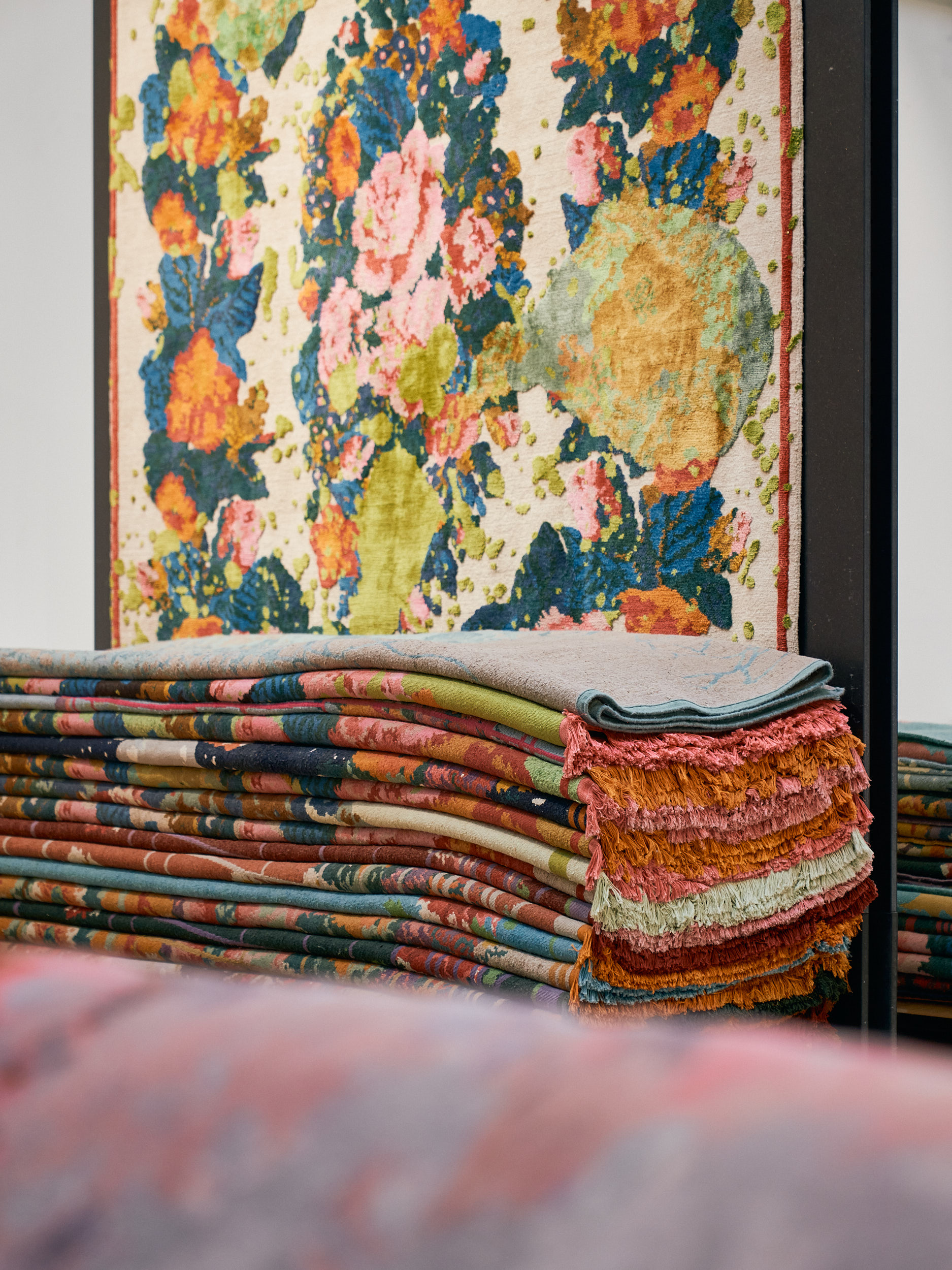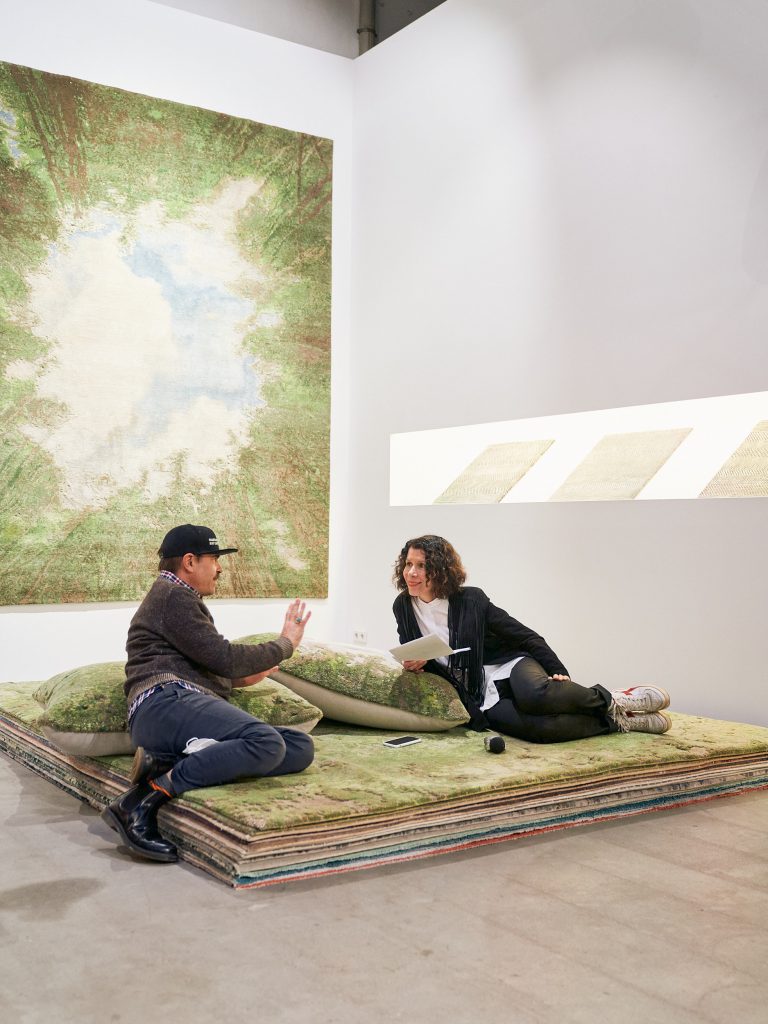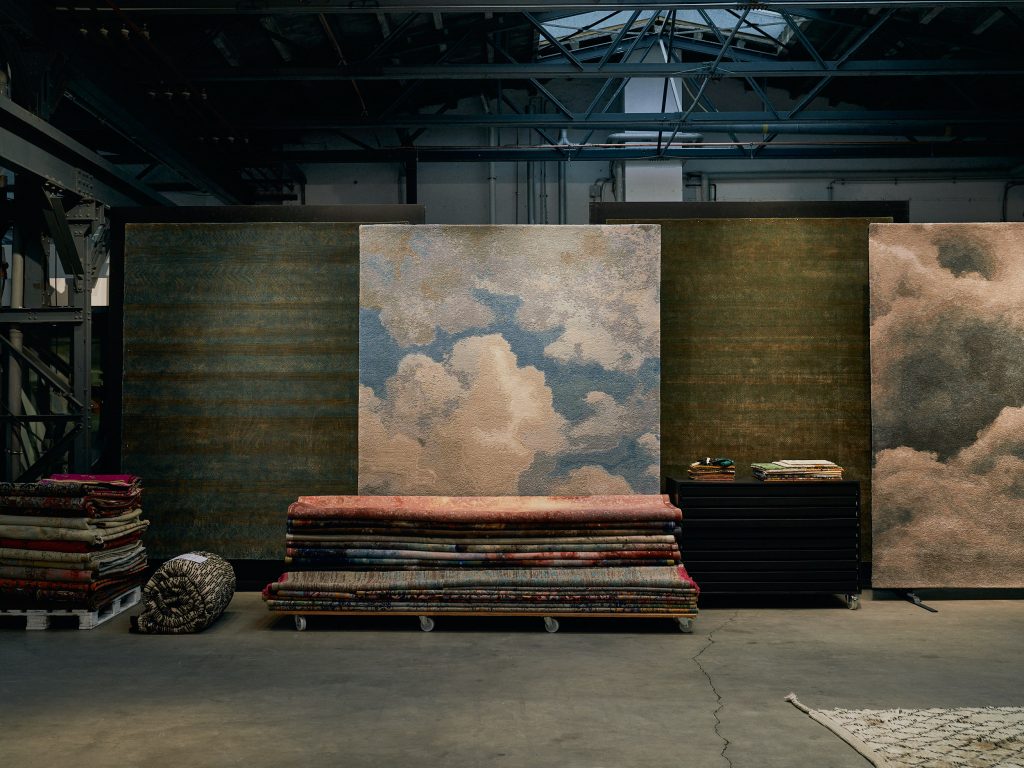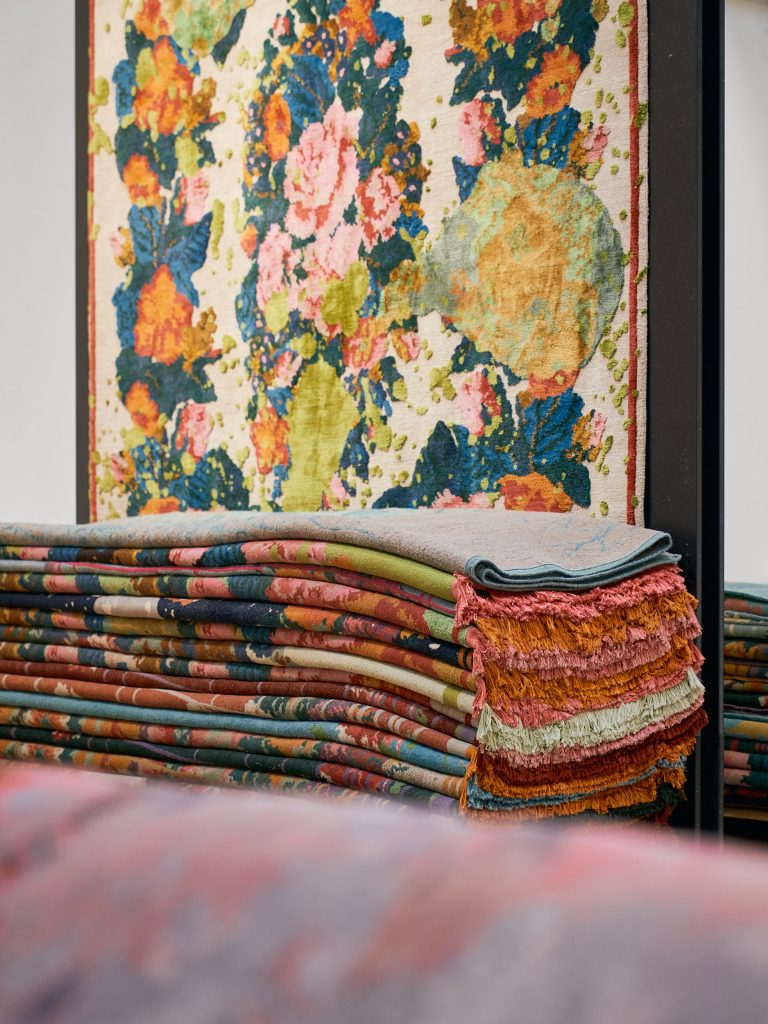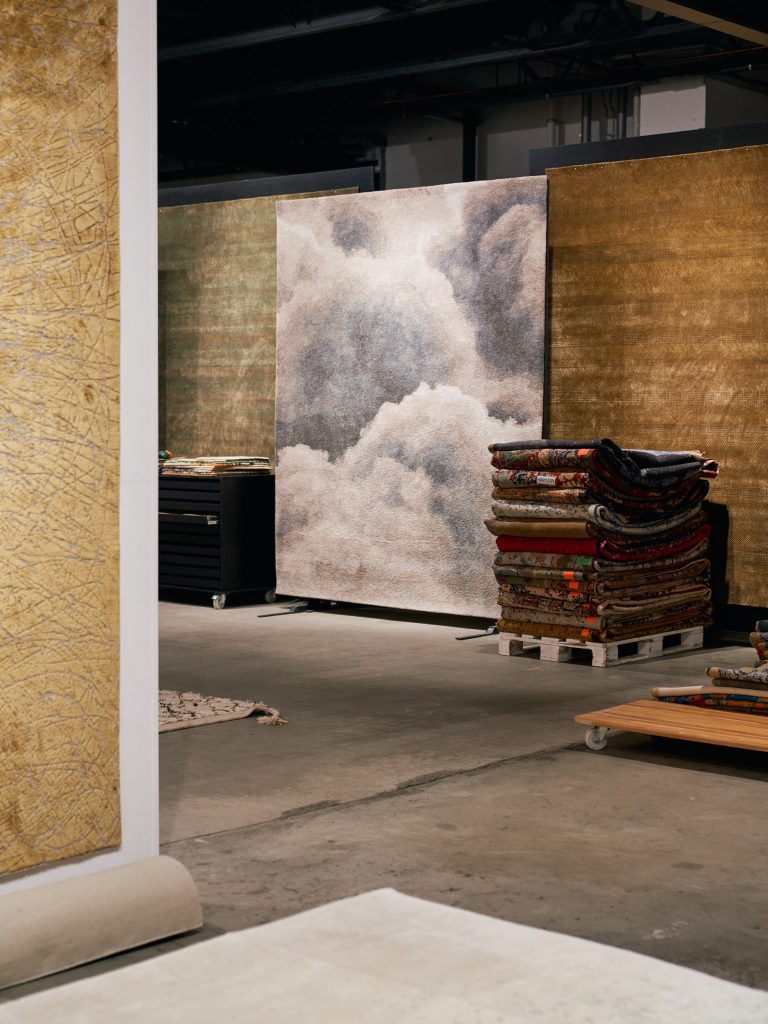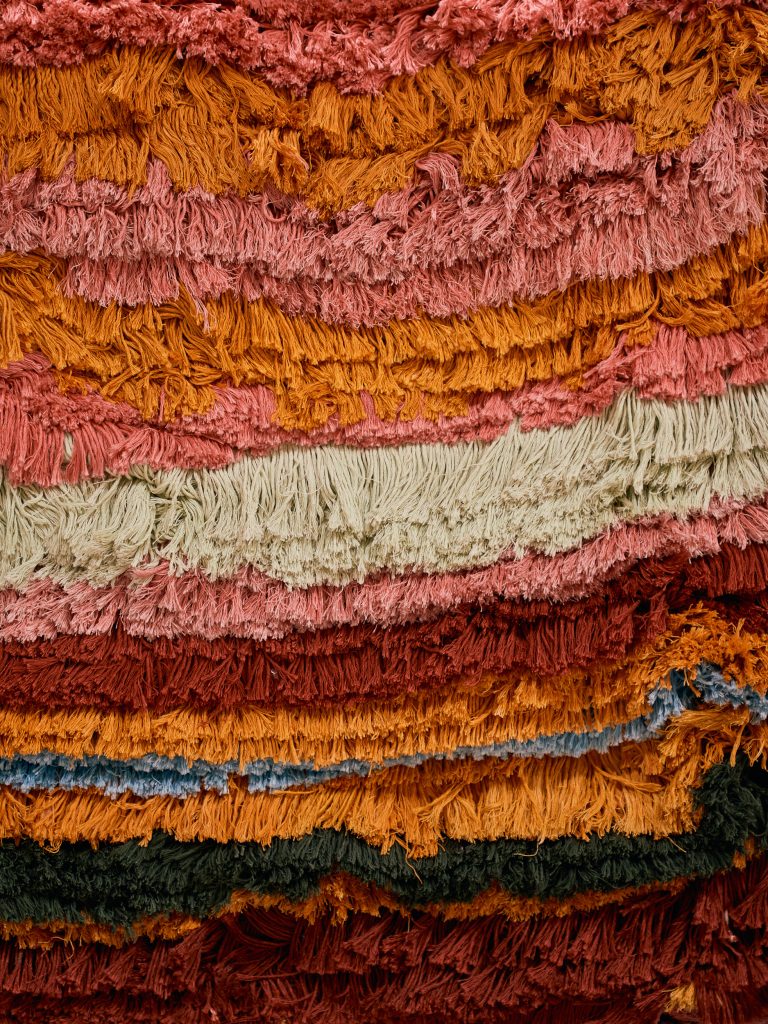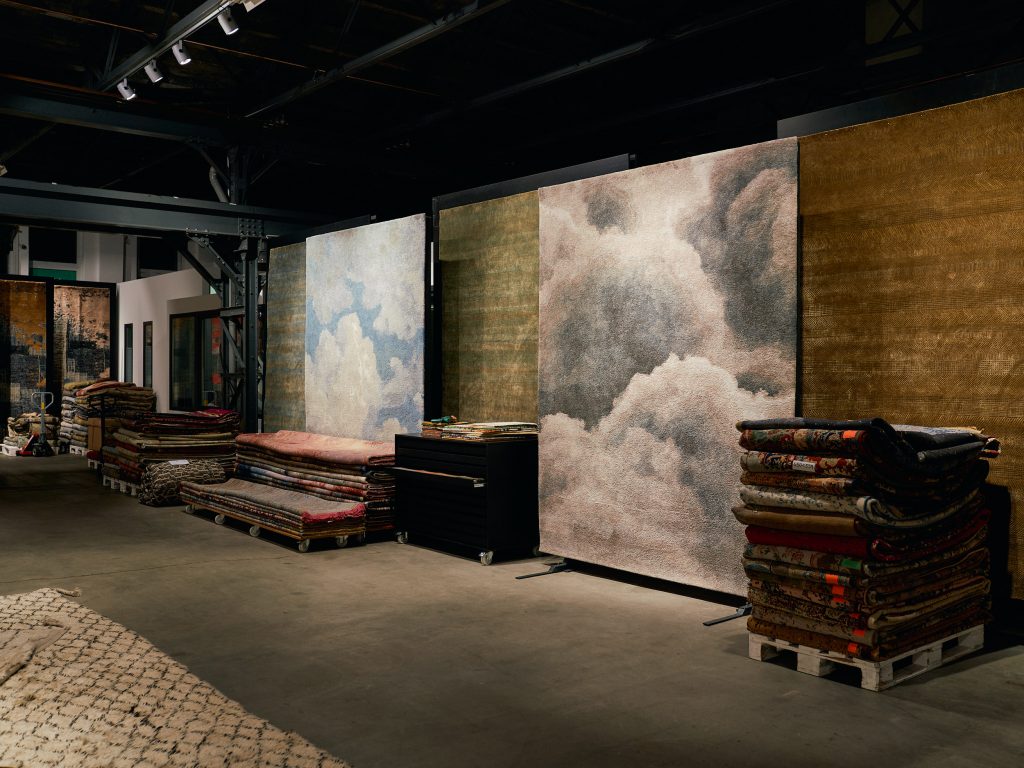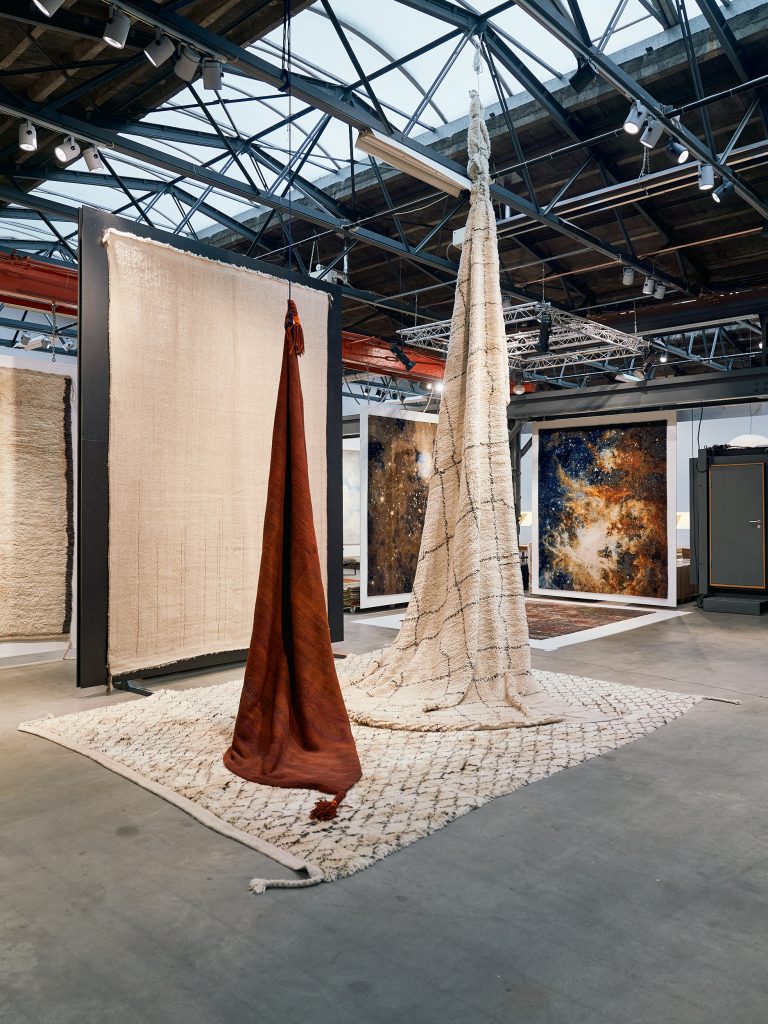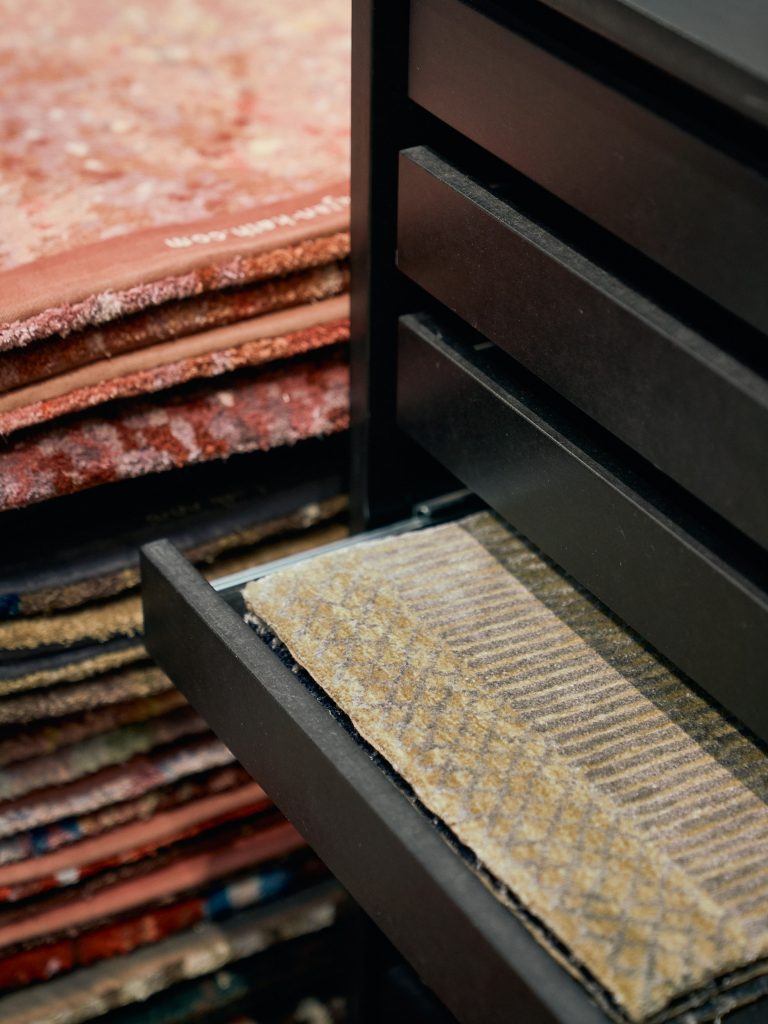How does a boy from the “Pott” end up reinventing the carpet, in a time when everyone is living on bare concrete and wooden floors? How did he ever manage to develop the world’s largest and most exclusive carpets, for kings and presidents, for luxury fashion houses and pop stars? The story of Jan Kath sounds like a fairy tale from Arabian Nights. He is going to tell us all about it in his 2000-square-metre large headquarters within an old factory building in Bochum, resting on a pile of his most exquisite carpets that he calls “wellness islands”. This is the story of a man who set out to travel the world, eventually stranded in Nepal, and found his fortune there in a carpet manufactory. Since then, Jan Kath has become one of the world’s most influential carpet designers, with showrooms in Bochum, Berlin, Cologne, Stuttgart, New York, and Vancouver. He has 1200 employees in Nepal turning his designs into reality by hand. His workers in Morocco and Turkey are weaving for him based on old traditions. His adopted country Thailand is where his semi-automated carpet production is located. Jan Kath offers eclectic designs, combining patterns from the time of the Sun King Louis XIV with pen-and-ink painting; he skilfully ages surfaces artificially, casting mountains of clouds and northern lights onto the floors in a virtually inexhaustible spectrum. In our interview, the globetrotter tells us about his favourite carpet, that he can still whistle the Bochum song, and about the business action that set him on the final road to success.
Jan, you design carpets that have nothing to do with the dusty image of the old oriental carpet in their entirely new aesthetics. How did you, a boy from the “Pott”, end up reinventing carpets?
Virtually every large German city had its first carpet company in the 1950s, 60s, 70s. The Bochum one was run by my parents. They had created a nest for themselves in the city following the war. They had identified Bochum as an interesting location since it was an up-and-coming city. There was plenty of coal and steel industry there. The miners and the directors all had to get their living spaces outfitted. If you wanted a curtain, you came to us, to Keil und Kath. If you wanted to buy a German oriental carpet, you did the same. Keil und Kath always gave you quality no matter if the carpet was machine-made or actually came from the East.
You took up travelling as a young man.
That’s right. I wanted nothing to do with Keil und Kath initially. I had an entirely different focus and was rather attached to the anarcho-autonomous scene in my early youth. It was a contrast to where I came from. On the other hand, my father was a great influence for me. He was a very down-to-earth person who always held his employees in high esteem, in the office as well as in production.
Do you associate this down-to-earth approach with the Ruhr area in any manner? Is this attitude towards work and the cohesion of people a matter of mentality?
My family had two sides: There was my mother’s family, the Jäger side. They were miners or steel workers. My maternal grandfather, for example, worked his way up to become a master foundryman. The other side was made up of the merchants of the Kath family. They came from Bochum-Oberdahlhausen, while the Jäger family hailed from Unterdahlhausen. They already represented two colliding worlds, and they had to make it work somehow. I think I was able to get a good grounding from both of them.
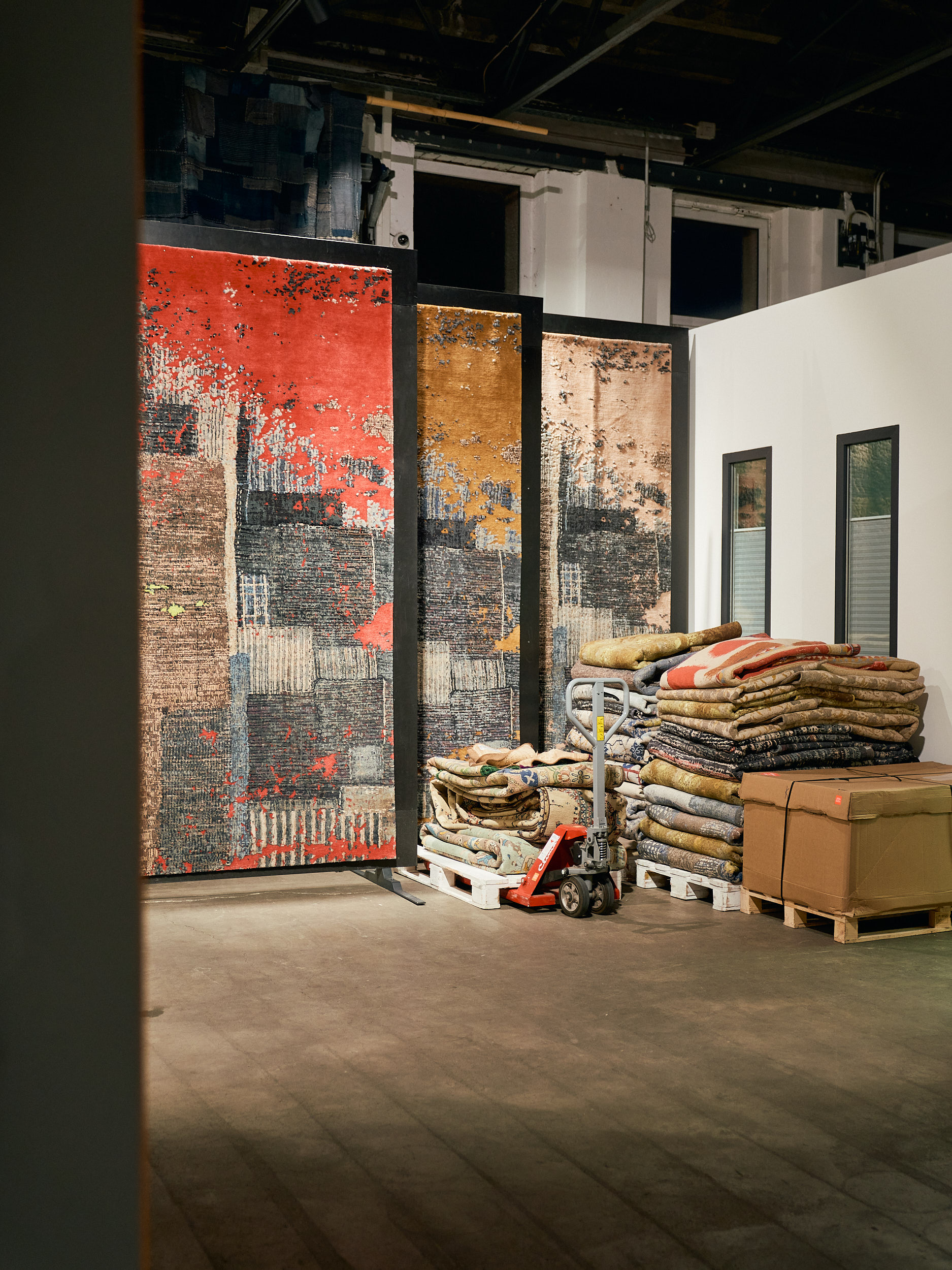
I think it’s safe to say, without exaggeration that you are largely responsible for bringing back the carpet to the living rooms of style-conscious people in the course of the last two decades, even internationally. When did you become aware of this trend reversal?
I actually tried to set off this trend reversal, i.e. to steer the development myself. I remember clearly that we were producing our first major catalogue project, still analogue at the Zeche Zollverein at the time, about two decades ago. I scraped together my last few bucks to pay for the photographer. That was the best decision I ever made! That is how we became a brand and set out on the path we have never left since. If you picked up any architecture or design magazine 20 years ago, there wouldn’t have been as much as a single carpet in any of the interiors. If you open a magazine today, no matter which one, there’s virtually nothing that would be doable without a carpet. I think we really did contribute to that.
Your family is in the carpet business in the third generation already. What connects you to the carpet emotionally?
Memories play a big part in this. I am still living on a rug my father gave me for my 14th birthday. It’s an old Persian piece in a particular traditional weave called bidjar. It continues to be one of the most durable knotting techniques known. It is small and measures only 2.5 square feet. I had it on the wall for the first few years. Now, I’m sitting on it every night.
I remember clearly that we were producing our first major catalogue project, still analogue at the Zeche Zollverein at the time, about two decades ago.
I read somewhere that you didn’t have any carpets in your loft.
I do have carpets. I moved recently, though. Before that, I was living above the company. If you’re looking up, at that window towards the hall: That used to be my living room. Earlier this year, I decided to move away from it all and to get a smaller apartment. None of my two big sons or little daughter live with me. I really don’t need 350 square metres of floor space. 70 square meters is quite enough for me, in particular in light of my travels. It may take a little while, but I would like to move to Thailand when I eventually get to pass the baton to my children.
You already live in Chiang Mai part of your time, and you travel between Bochum, Thailand, New York, Nepal, and Turkey. Why are you still in Bochum? What fascinates you about the Ruhr area?
I could say that it’s the people who are authentic here. It’s really mostly about my family, though. They decided to settle here 70 years ago, and they took a lot from the city. I don’t want to say that I want to give that back now, but I do feel like a Bochum boy, I can whistle the Bochum youth song. Somehow, I do feel like I belong here.
So Bochum continues to be your home?
Absolutely, although we’re not really commercially successful here. Our business is different now. We serve clients in New York, Los Angeles, Vancouver, Riyadh, and Beijing. There have been changes. Back in the day, before things really took off, I had a little Passat station wagon that fit precisely 14 carpets that I would lug through the pedestrian zones to their new owners.
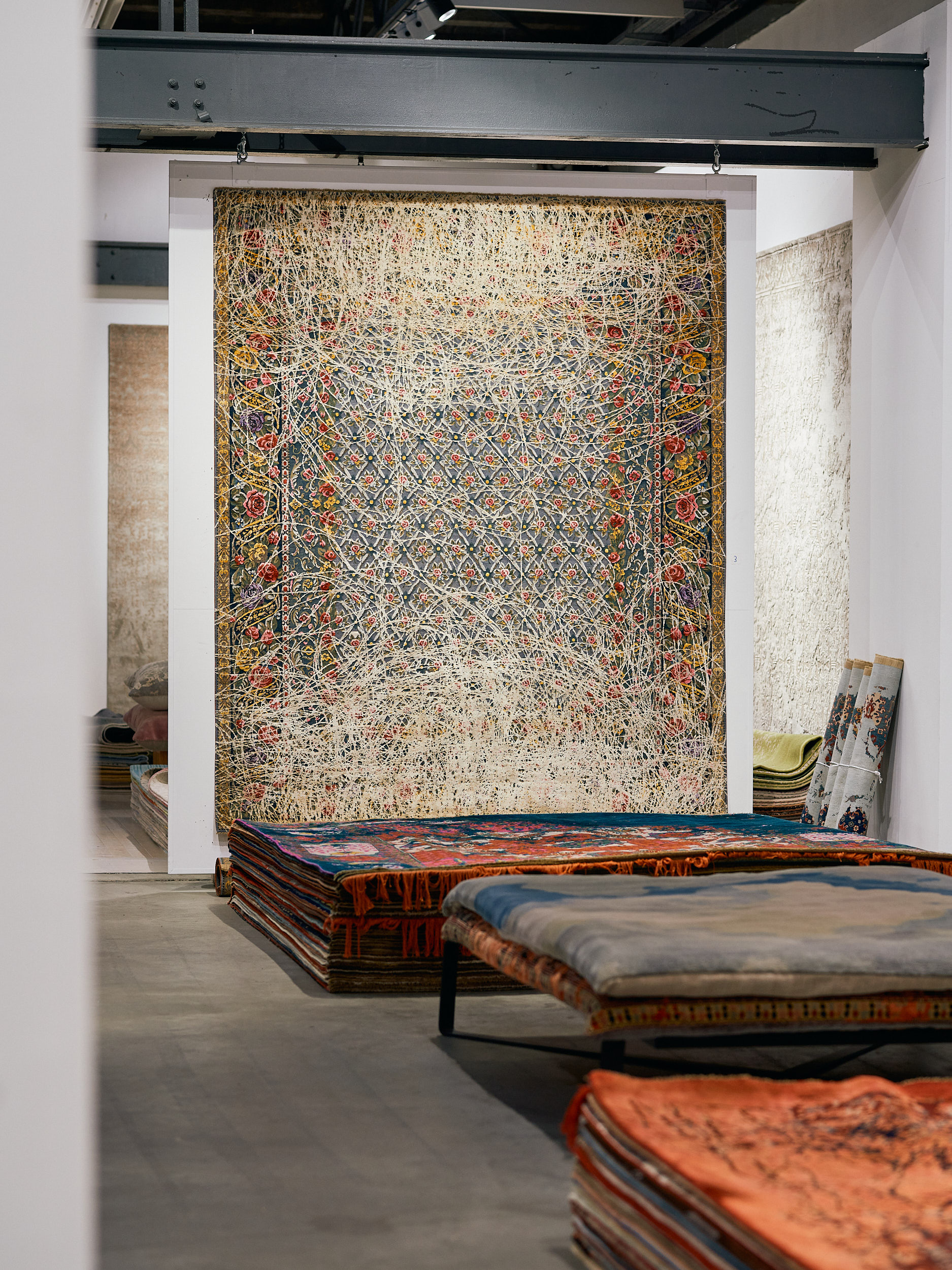
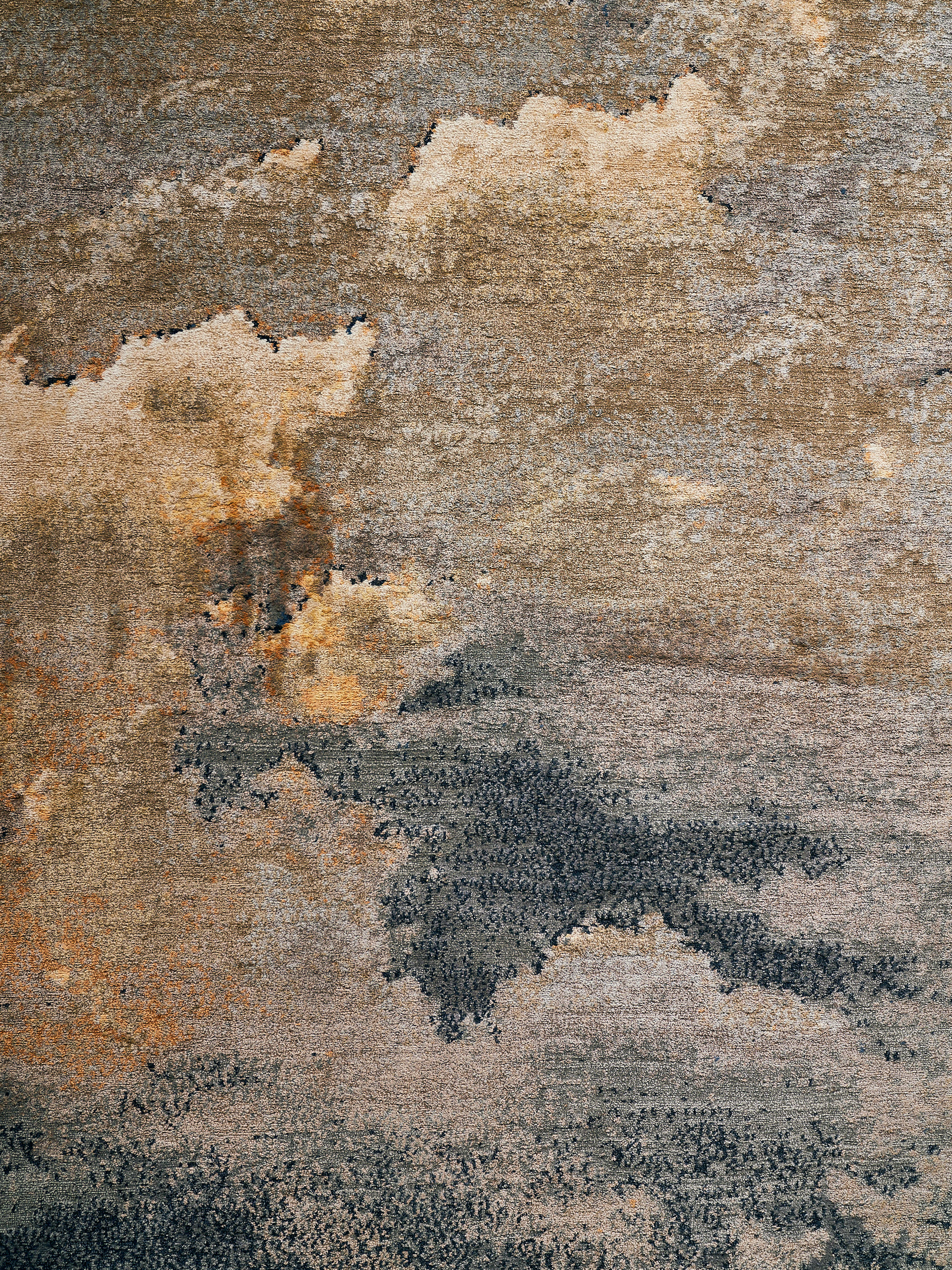
Some of your carpets cost as much as 2,700 euros per square meter today. Is that still commerce, or can it be called art?
I’ll let others be the judge of that. When we call a price, it doesn’t mean that anyone here is taking home riches. It is simply the product’s price. A certain number of people have worked on it for a certain number of months. Of course, whoever is selling the product has to make some money, too, in the end. That’s how the price Is set. But it is real, rather than an artificial, fictitious price, as you find it in some fashion brands. We also try to make things that are as popular tomorrow as they are today. My kids like what I do. I didn’t really find my father’s and grandfather’s work very cool.
Your example shows that a product’s aesthetics also contain a sustainability aspect. This matter is relevant in carpet production in general. You have been dealing with it from the outset.
Sustainability and naturalness go hand in hand. I don’t want to say that the sustainability debate isn’t affecting us at all. Of course it is. We never had to chase that, though. We were always in the first lines, without trying to make a huge deal of it. It is in the nature of things.
So is it in how your production works? Your wool comes from Nepal.
We use a very, very great lot of wool. There are about five kilograms of wool in a square metre, and cleaning, washing, and dyeing causes a loss of about 50 percent. Still, we try not to buy the wool from large Indian spinning mills, but pre-book it a year or two in advance in Tibet. The shepherds are nomads, out in the mountains with their animals. They need to know who is going to take the wool from them in the next two or three years anyway. We try to identify ten farmers who will deliver good quality and pre-book their products.
Then the wool is sent to the factory?
The wool is sent to us in the valley, to Kathmandu. We used to actually wash it ourselves, but we have laundries do it for us now. When they return the wool to us, we will comb and spin it.
So you are in control of the entire production process.
Yes, absolutely. This is the only way we can produce at this high quality.
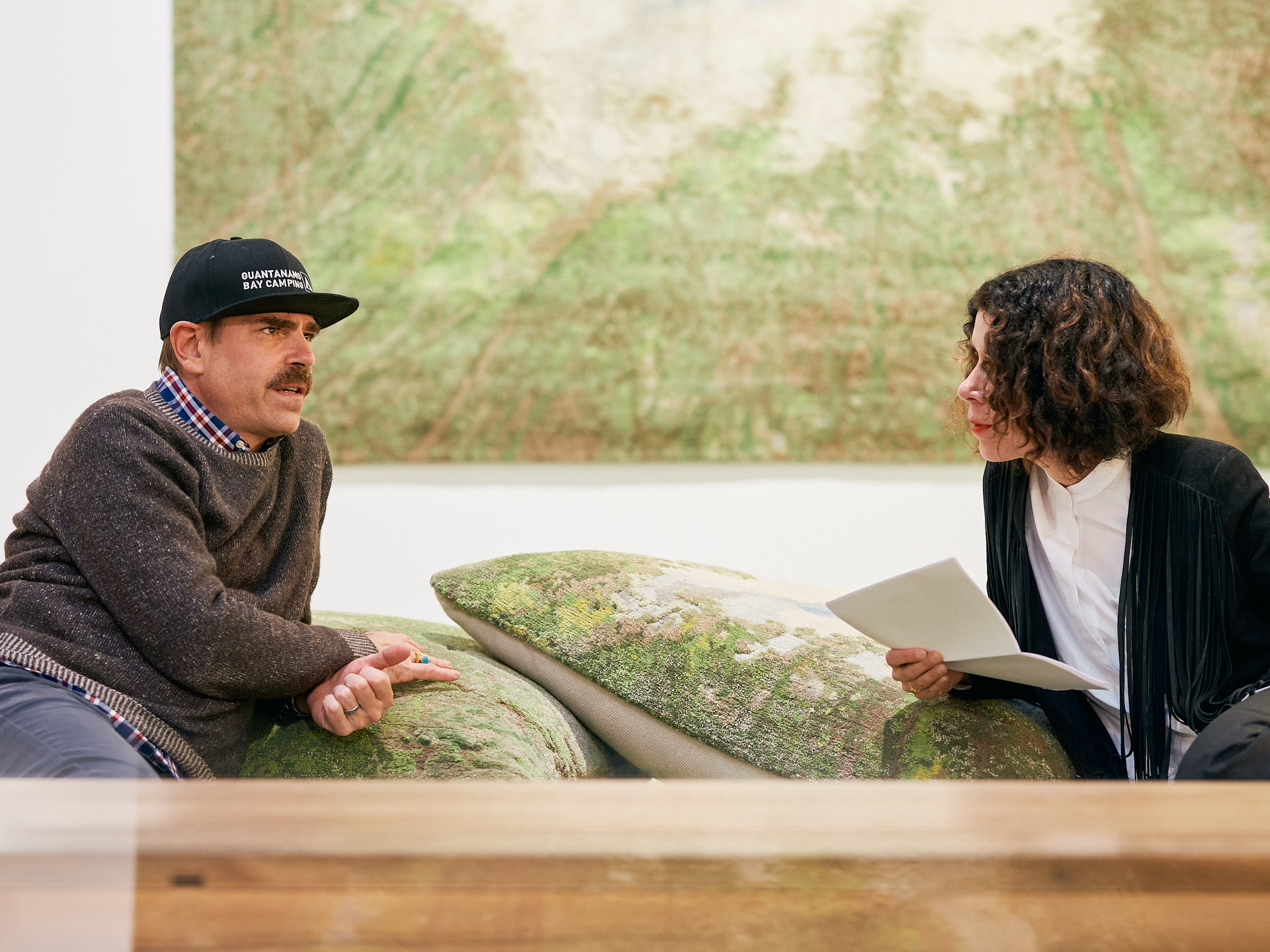
You were 21 years old when you started your production in Nepal. What were some of the greatest changes there?
Today, the carpet-makers who are my children’s age are at least as informed as our children are. They have access to the same digital media after all. They can talk to their grandmas on the phone while knotting, or they can check out our website and get an idea of where what they’re making is going. That simply wasn’t a thing before. Back in the day, they were completely cut off. Nepali society in Kathmandu has gone through some remarkable changes. Within ten or fifteen years, they were catapulted right into the 21st century. Witnessing this process was extremely interesting.
Thank you so much, Jan, for taking time for us. We have greatly enjoyed meeting you here and seeing how down to earth you have stayed in spite of your huge international success.
Text: Ilona Marx
Fotos: Sebastian Wolf


